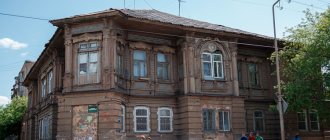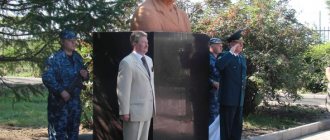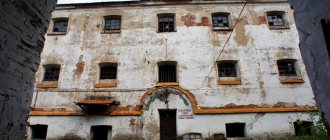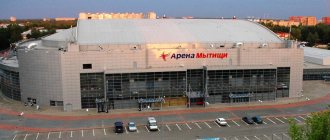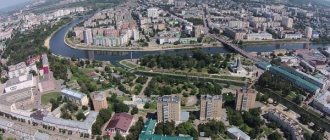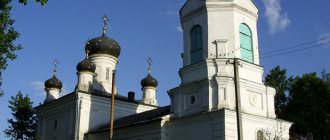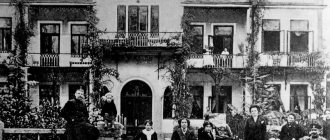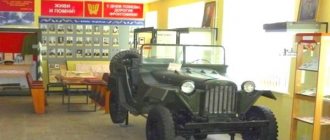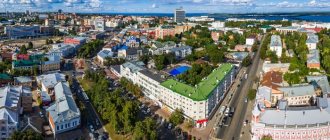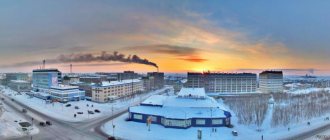The ancient Udmurt town of Glazov has its own unique architectural appearance. During the 19th and early 20th centuries, beautiful wooden mansions with carved decorations and brick houses in Art Nouveau and Neo-Baroque styles appeared on the streets of the city.
Many buildings are well preserved. Russian wooden architecture always inspires admiration.
Tourists noticed that Glazov residents monitor the condition of old houses. It is clear that people do not want to live in dullness. Painted shutters, restored facades - this is how many ancient buildings look.
Where to start a tour of this amazing city? Of course, from Freedom Square. Here is one of the popular attractions of Glazov.
War memorial on Freedom Square
This landmark was erected in the city of Glazov for the 25th anniversary of the great victory of Soviet soldiers over the Nazis in 1975. The war memorial is presented in the form of a sculpture depicting two soldiers, a memorial plaque with the names of heroes who gave their lives in the war and a tall spire.
The memorial area is always well maintained. Local residents and tourists lay fresh flowers at the monument all year round.
It is noteworthy that this monument was dismantled several times; once again it was reconstructed in 2007.
Location: Freedom Square.
Settlement "Indakar"
The famous archaeological site is located just 4 km from Glazov. “Indakar”, translated from the Udmurt language, means “city of the hero”.
Researchers have established that the age of the medieval settlement reaches eight to eleven centuries. The most likely time of construction of the settlement of the Finno-Ugric peoples is the end of the 9th – beginning of the 13th century.
In ancient times, the large fortified settlement of Indakar was located on a high hill. Archaeologists have established what the Chepetsk settlement looked like many centuries ago.
Despite its venerable age, the base of the wooden frames is well preserved.
Using the example of reconstructed dwellings, tourists will understand what life was like for the peoples of Udmurtia in the early Middle Ages.
Thousands of objects belonging to our ancestors were found in the Indakar reserve museum. Research into the Chepetsk settlement continues today.
Tools, dishes, jewelry, things, talismans, amulets, wooden statues of gods, remains of furnaces for cheese-blowing iron smelting and other valuables. Tourists are amazed by the fine work of ancient masters.
A visit to the museum-reserve on the Soldyr River will give you an unforgettable experience. Address: st. Sovetskaya, 27.
Socio-cultural
In 1951, a palace of culture was built in the city of Glazov, called “Russia”. This building was erected in the so-called “Stalinist Empire” style.
The monumental building with adjacent linden alleys, monuments and a fountain became a real decoration for the post-war city. They, together with the now socio-cultural ones, are still the most famous attractions of Glazov.
Famous people perform on the stage of this cultural palace, and there are clubs and sections.
Location: Sovetskaya street - 29.
Ancient sights of Glazov
In order to see the ancient settlement, it is enough to drive 4 kilometers from the city. It is called the Idnakar settlement or the first Soldyr settlement. The sights of Glazov are interesting because they help you learn the history of Udmurtia and the customs of its inhabitants in ancient times.
The city of Idnakar received its name from the Udmurt warrior Idna, who became its founder in the 9th century. The settlement was a craft, trade and cultural center for four centuries. Archaeological excavations helped everyone see the dwellings of the ancient Udmurts and their household items.
Glazov Museum of Local Lore
The museum was founded in 1918. Today, within its walls there are 8 exhibition halls dedicated to various topics.
The most extensive collections are considered to be collections of household items, musical instruments, ancient coins, and so on.
Museum workers can provide tourists with the opportunity to attend an excursion program designed in folk style; tourists can also purchase a tour from the museum, which gives them the opportunity to get acquainted with the sights of the city and its surroundings.
Location: Kirova street - 13.
Glazov Museum of Local Lore
The provincial town museum delights tourists with the richness of its collection and the varied themes of its exhibits. Valuables are displayed in eight rooms.
Visitors will see several thematic exhibitions:
- "The life of mayor Pyotr Fedorovich Tchaikovsky."
- “The city of Glazov in the 19th–20th centuries.”
- "The Universe and Man."
- "Life's work."
- “City of Craftsmen (exhibition of folk crafts).
In the literary and musical living room there are exhibits dedicated to the work of A.P. Chekhov’s wife, Olga Knipper. Creative people often gather here.
Address: st. Kirova, 13.
Monument to Pavlik Morozov
In the city of Glazov, tourists can see a monument to Pavlik Morozov, a boy who denounced his father to the security officers and was killed at the hands of his relatives. The height of the monument is 2 meters.
The boy stands on a high pedestal, he is depicted in clothes flowing from the gusts of wind, a red tie is tied around the child’s neck, and a cap is put on his head. There is a plaque on the monument containing some information about the young pioneer.
The sculpture is located in the park, tourists come to it and lay flowers at the foot. Some creative tourists wear various hats over the Pavlik cap, and tie ties or bow ties around their necks.
Location: Sovetskaya and Kirova streets (intersection, in the city park).
Church of the Transfiguration
The building of this religious center was built in 1887. During the period of Soviet power, it was partially damaged - half of the buildings were completely demolished.
The wooden church building was first built back in 1750 with funds collected by newly baptized Udmurts; it was called the chapel of St. Nicholas the Wonderworker.
Subsequently, a stone church was built in its place, which was already called the Church of the Transfiguration.
During the Soviet period, the surviving buildings of the church housed a sports school and a cinema. Today this building is being reconstructed; subsequently it is planned to join the new church, with which it will form a religious complex.
Location: Freedom Square - 10a.
Transfiguration Cathedral
The main temple of the city was built in 1887. After the revolution, the cathedral fell into decay. In 1960, the authorities had to close the dilapidated structure and almost completely demolish it.
At the beginning of the new millennium, residents decided to rebuild the ancient cathedral. The work continued for several years. In 2007, the temple received its first parishioners. A beautiful, elegant building is the pride of Glazov.
Address: pl. Svobody, 10a.
There are many interesting places in the city. Take your time to explore the main attractions.
Historical and cultural museum-reserve "Idnakar"
The scope of this city attraction includes: the archaeological monument “Soldyr settlement Idnakar IX - XIII centuries. BC”, which has the status of an object of federal significance, and, accordingly, a museum building with exhibitions located in it.
Idna is the name of a historical character, batyr, kar is a settlement or ancient settlement. At its core, Idnakar is a settlement named after the local legendary hero. The settlement is a military fortress, simultaneously combining the role of an administrative center, built by the northern Udmurts.
The local settlement was headed by a ruler, as evidenced by a bone seal found during archaeological excavations.
In the museum, tourists can visit exhibitions dedicated directly to Idnakar, presented in the form of objects found at excavation sites, and exhibitions telling about the nature of the north of Udmurtia.
Since 1999, a permanent exhibition dedicated to the everyday life, life and craft of the medieval inhabitants of the settlement has been created for visitors to the museum-reserve. Visitors can see a model of the reconstruction of a medieval burial.
Idnakar today is the only monument of its kind dedicated to the culture of the Finno-Ugric peoples. Its area is 4 hectares.
Location: Sovetskaya street - 27/38.
ATTRACTIONS OF GLAZOV
In Soviet times, construction was carried out at a rapid pace according to a revised general plan; the appearance of the city was created by the best architects of Leningrad, hence its greatness.
In the city of Glazov there are many interesting places built already in the Soviet period: the socio-cultural one is a one-of-a-kind example of the Stalinist Empire style, the Idnakar settlement is a historical and cultural reserve-museum, which I will talk about in the next article, and other attractions.
You need to write separate notes about all the beauties and historical places of Glazov in the following articles. And I’ll start my story, as they say, from the stove - from the place where I live - from the objects located next to my house.
It probably wouldn’t be worth starting with the store, but when you leave the yard, your eyes will certainly land on it. It has been standing for a long time, only the owners, names and food range have changed. At the beginning of 2022, another “Izhtrading” store closed, and the building was transferred to other owners and now the store is called “Magnit”.
Youth club "Rodnik"
The next object, which rightfully was a pride in its time, and now an attraction in quotation marks, is the Rodnik Youth Club. Two similar buildings were built in the USSR, the other is in Novosibirsk. I don’t know what condition it’s in, but our “Spring” is now simply in a deplorable state.
I wanted to show you what condition it is in now, but I won’t. I don’t want to spoil my and your mood. And what kind of evenings were held there, children's parties, dances, discos, at which I had to dance. When I pass by, it’s a pity to see such a beautiful building disappear.
During perestroika, it was given (for still unknown reasons) to a private entrepreneur for free use, and the club became an ordinary, dirty disco. After the object wandered from hand to hand, it was finally transferred to the city municipal property.
According to the instructions of Rospotrebnadzor, the building cannot be used now. For several years now, deputies and management have been unable to decide to whom to transfer and how to use this wonderful facility in need of repair. In this unique space, the space allows for many different citywide events to be held. It’s hard to imagine where else you can gather about a thousand people under one roof. Well, let's not talk about the bad, let's move on to the next object.
School No. 4
Further along Tatyana Baramzina Street is our home school. Of the seventeen schools in the city, this one has long become home to me, my wife and children, even though I studied at a different school. My friends, wife, children studied there, and now my granddaughters study there.
The modern school building was built in 1970. For more than thirty years, the director of the school has been the Honored Worker of Public Education of the Urals, Alexander Ivanovich Prigoda.
In 1989, he graduated from secondary school No. 4, Hero of the Russian Federation Mikhail Konstantinovich Churkin. The captain, commander of the reconnaissance group, died while carrying out a combat mission to eliminate a gang on the territory of the Chechen Republic. In the school museum there is a stand with his biography, and on the wall there is a memorial plaque with his name. His bust is installed on the Alley of Heroes in Glazov.
School students actively participate in all city and republican Olympiads, competitions, cultural and educational events. The Internet contains all available information, from photographs and the history of the school, to information about teachers and reviews of students and their parents, which for many who were at least a little connected with this school is the first, important milestone from which the road to life begins.
Mosque
More than 5 thousand Muslims live in Glazov, who have long dreamed of having their own mosque. Construction began in 2011 and was completed in 2018, with a grand opening in 2022.
Tangible financial assistance was provided by the ex-president of Udmurtia A. Volkov, general director of Glazov Plants LLC Karim Kasimov, and more than 1.5 million rubles were collected by parishioners as donations.
Nowadays, the mosque is an entire institution where they teach, give good advice and instructions, and help in difficult times. I am very happy for all the Muslims who managed to build this grandiose facility in a short period of time.
Garment factory “Working Mark”
Next to the mosque there is an older building - the Rabochaya Marka garment factory. Previously, it was called the “Glazov Sewing and Knitting Factory”, and they produced bed linen, dressing gowns, sports suits, quilted jackets (they are also called sweatshirts, padded jackets), work trousers, and medical gowns.
I haven’t found more detailed information about this building yet, if anyone is interested, ask questions in the comments. If I find interesting facts, I will definitely write about Glazov in future articles.
The modern factory's assortment includes more than one thousand items of special clothing and consumer goods; it produces clothes for oil workers, welders, miners, metallurgists, medical workers and representatives of many other professions.
In 2009, a collection of stylish medical uniforms was developed, which received its own brand “Modus Medico” (Latin for “Doctor as he should be”). The collection was highly appreciated by doctors and was a success at thematic exhibitions. The company's products are in demand; they are supplied to many parts of Russia - from Abakan to Vologda.
Distillery "Glazovsky"
A short drive away from the factory is another ancient building, one of the sights of Glazov. This is a complex of ancient buildings built before the revolution and recently built by the enterprise - a distillery. This enterprise values its history and the history of the city, monitors the condition of buildings, and does not allow the original architectural appearance to disappear.
The first mention of a vodka factory was found in 1900 with the release of “Wheat” vodka and, like all wineries, it was a royal monopoly. During its existence, production faded out several times, then stopped completely and resumed again.
The production premises of the plant housed a hospital (1914), potato warehouses (1919), an orphanage (from 1922 to 1926), and tobacco production (1941-1950). Again and again, through the efforts of workers and managers, the production of wine and vodka was revived. Despite the difficulties, the volume and range of products produced increased.
With the appointment of N.B. Sorokin as director in 1993, production changed dramatically. After the reorganization and reconstruction of production equipment, the number of types of products increased. Since 1995, the distillery has become a participant in many prestigious industrial exhibitions, both in Russia and abroad.
High awards and worldwide recognition were awarded to such brands as: “Idnakar” balm, “Kalashnikov”, “Udmurt Republic”, “White Sail” vodkas, “Golden Crown of Russia” aperitif, “White Sail” liqueurs, sweet liqueurs and others.
At the beginning of the 21st century, the distillery mastered the production of new products - “Chepetskoe” beer and “Syaninskaya” drinking water. Today the plant is a reliable and responsible business partner and a large taxpayer in the city’s kazoos.
Monument to the Janitor
A representative of the most useful profession - a janitor, cast in bronze - can be seen on Shkolnaya Street. The author of the project is sculptor Vladimir Kelm. The monument was cast in the city of Tchaikovsky.
Initially, it was proposed to immortalize in bronze a girl in a baseball cap holding a broom, this was due to the fact that the majority of janitors in Glazov are women. However, subsequently it was decided to cast a statue of a man 2 meters tall.
A huge number of people come to the monument every day and take pictures against its background.
Location: Kirova street.
Monument to T. Baramzina
Few people know Tatyana Baramzina, a Soviet sniper warrior. However, in the city of Glazov, where she was born, the girl Tanya, who died at the hands of the Nazis, is considered a hero.
During a shootout near the village of Pekalino (Belarusian SSR), she personally destroyed 20 fascists until she ran out of ammunition.
In 1945, Tatyana Baramzina was awarded the title of Hero of the USSR posthumously. In her hometown of Glazov, a monument was erected to the girl; the author is the sculptor B.P. Barkov. Tourists can see this attraction in the Maxim Gorky Park of Culture and Leisure.
Location: Park of Culture and Leisure named after. A.M. Gorky.
Interesting items
Excavations began in 1885. They were studied by archaeologist A. A. Sinitsyn and local historian N. G. Pervukhin. Scientists are still working at this site, and research is also being carried out on the found everyday and cultural objects. It's hard to believe, but these days we can even see wooden frames that are still well preserved. In addition, the Idnakar Museum contains more than a thousand artifacts found during excavations. Among them are the remains of craft tools, dishes, amulets, and jewelry. The Idnakar settlement is protected as an archeological monument of national importance.
Monument to V. G. Korolenko
Almost in the very center of Glazov there is a monument to the great writer V. G. Korolenko. It is presented in the form of a bust of a man whose arms are folded on his chest. Instead of legs, a pedestal was built near the monument, on which the name of the writer and the years of his stay in Glazov are engraved.
This monument was erected to the writer not only for his creative work, but also for the fact that he was exiled to this city in 1879, accused of agitating revolutionary ideas and communist propaganda.
Location: Korolenko street.
HISTORY AND LOCATION OF THE CITY OF EYES
According to officially found documents, Glazov is more than 340 years old. It is located in the north of Udmurtia, between Kirov - from the west, 182 km and Perm - from the east, 209 km. It is an important railway station and a large city between these settlements.
Glazov stands on the left bank of the Cheptsa River, which is the largest tributary of the Vyatka. There are many versions of the origin of the city’s name, according to one of them it is associated with the Udmurt combination of words “oshmes sin”, which literally means “eye of the source” or “spring” when translated into Russian.
The second version connects the name with the surname of the founder of the settlement. And third, the city has a fan-shaped, radial-arc layout from the main square, on which the oldest Transfiguration Cathedral is located, with streets running in a circle.
Schematically, this layout is similar to an eye with eyelashes. It was created according to the plan of the architect from St. Petersburg Ivan Lem and embodied by the leading architect of the Vyatka province Roslyakov F. M. By decree of Empress Catherine II, the village of Glazovo in 1780 received a coat of arms and the status of a city, and in 2007 the population exceeded 100 thousand people and gradually grew.
The settlement itself grew, gradually turning into a modern beautiful city - houses, cultural and educational facilities were built, but now, after the change in the political system in Russia, the population is steadily falling - people are simply leaving and today there are about 90 thousand people left in the city. Why? You need to ask city leaders.
Historical milestones
Since 1796, Pyotr Fedorovich Tchaikovsky, the grandfather of the world-famous Russian composer Pyotr Ilyich Tchaikovsky, who made a lot of efforts to raise the provincial town, became the mayor. In 1825, Decembrists who were transported to Siberia stopped in Glazov. Among them were the Bestuzhev brothers, S.P. Trubetskoy, S.G. Volkonsky, close friends of A.S. Pushkin - I.I. Pushchin and V.K. Kuchelbecker.
In 1837, the future Emperor of the Russian state Alexander was passing through here. His companion on this trip was the famous Russian poet V. A. Zhukovsky.
By 1856, Glazov became the main trading center of the county. They even traded with foreign countries, through northern Arkhangelsk. In 1879, the writer V. G. Korolenko was exiled here, who later described these places in the essay “The Unreal City.”
Since 1898, with the construction of the Trans-Siberian Railway through Glazov, the city began to grow, small enterprises, factories, workshops, and educational institutions began to appear.
The reverberations of the Revolution and Civil War did not bypass our city either. Due to the difficult situation on the Eastern Front and the fight against Kolchak, I.V. Stalin and F.E. Dzerzhinsky came here to solve the problem of strengthening the city’s defense.
A noteworthy fact is that from December 1920 to June 1921 Glazov had the status of the capital of Udmurtia. During the Great Patriotic War, hospitals, factories and military schools evacuated from the West were located here. In the post-war years, on the basis of a cartridge plant evacuated from Leningrad, the Chepetsky Mechanical Plant was built, which later became a city-forming enterprise.
Chapel of Alexander Nevsky
In 1837, Emperor Alexander II visited the city of Glazov. In honor of this event, it was decided to erect a chapel in the city, later named the Alexander Nevsky Chapel. During the Soviet period, this cultural and historical site was demolished and is currently being reconstructed.
Location: street Pervomaiskaya and Molodaya Gvardiya streets (at the intersection).
Glazov Municipal Theater
In 1983, in Glazov, through the activities of the director, a folk theater was founded, which in 1987 received its name “Paraphrase”.
The theater takes part in numerous festivals and has a huge number of awards. Tourists visiting Glazov speak very warmly about visiting this cultural center.
Location: Sovetskaya street - 19.
Pipe of unfinished CHPP-2
Within the city there is one very interesting attraction - pipes 200 meters .
The territory where the abandoned pipe stands was supposed to become the site for the construction of another thermal power plant, but with the collapse of the USSR the project was frozen.
Now this technical facility acts as a training place for extreme sports enthusiasts, who climb to the very top of the pipe and view the panorama of the city from above.
Location: street.
Gorky Park
This favorite vacation spot for tourists and local residents can rightfully be called a landmark of the city of Glazov. Along the entire perimeter of the park there are attractions and sculptures of characters from fairy tales and children's favorite cartoons.
Theatrical programs are held on the territory of the park, which are organized by socio-cultural employees.
Location: Komsomolskaya street - 16.
